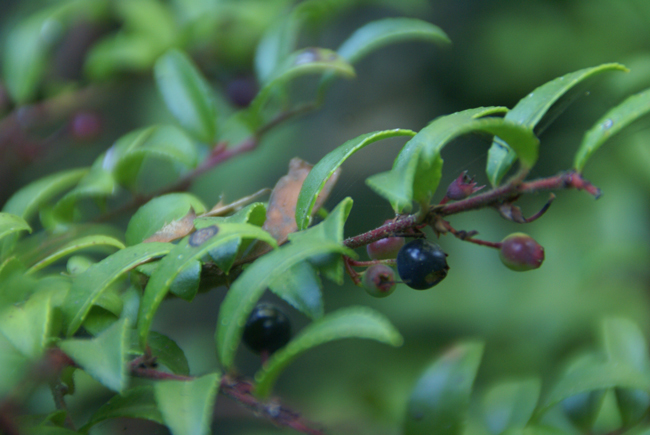
How toxins can affect first foods, tribal health
Listen
(Runtime 1:05)
Read
For the Nez Perce Tribe, connections to culturally important first foods, like salmon and berries, are deeper than just nourishment. Tribal members say these foods are fundamental to their life, language and identities. Toxic environments can threaten these foods.
“From industrial pollutants to agricultural runoff, these natural resources have become reservoirs of toxicity, threatening the very essence of traditional first foods,” said Angela Jackson, a spokesperson for the Nez Perce Tribe. “Salmon, the cornerstone of Indigenous diets and cultural heritage, are now at risk of contamination carrying with them a silent but potent threat to community health.”
Jackson spoke at a recent Tribal Voices Matter speaker series hosted by the Nez Perce Tribe. The series promotes how science could help recover imperiled Snake River salmon and steelhead.
Kim Hartwig, the Nez Perce Nimiipuu Health medical director and a tribal member, likened the waterways where salmon swim to veins and arteries in people. She said in both areas, you can’t try to fix a single system.
“There isn’t one system on our body that works independently, and if any one of our systems collapses, we don’t survive,” Hartwig said during the webinar.
The same, she said, can be true for ecosystems.
For tribal members, those first foods and the ecosystems they thrive in are much more important than for just sustenance, said Nakia Williamson-Cloud, the manager for the tribe’s cultural resource program. He’s also a member of the Nez Perce Tribe.
“These things have to play a role in our life as they always have. When toxins are introduced in the system, we don’t have the ability just to turn away and take another route in life without changing what it means to be Nimiipuu,” Williamson-Cloud said. “Nimiipuu” refers to the name tribal members call themselves, and means “the people.”
Hartwig said people need to take a more holistic approach to health and to the environment. Staying connected to the Nez Perce’s cultural identity and the land could help many health problems she sees, like diabetes and high blood pressure, she said.
Tribal members could use their cultural identity to heal from within, Hartwig said, calling this idea the most important way to address health maladies.
“When you don’t have confidence in who you are, how can you care about what a blood sugar is or what your blood pressure is, or that you have protein in your urine, or that you have some numbness or tingling in your toes?” Hartwig said. “Those things don’t don’t really matter because that deeper conviction of who you are or who created or made you supersedes any of the measurements that that we can use in medicine to help.”
In addition, she said, traditional practices require plenty of physical strength.
“Standing on a hillside or on a river side takes a lot of strength and balance. To be able to pull in the fish or to dig the roots, there’s a lot of manual labor there that was healthy for us that we aren’t participating in anymore,” Hartwig said.
For change to happen, she said policymakers should take note of the tribe’s wisdom.
“In the colonized world, there’s often a need for data or evidence in general,” Hartwig said. “Us being here for over 16,500 years, are we not evidence enough for all that has happened to try to destroy us? In my mind, that’s enough.”















